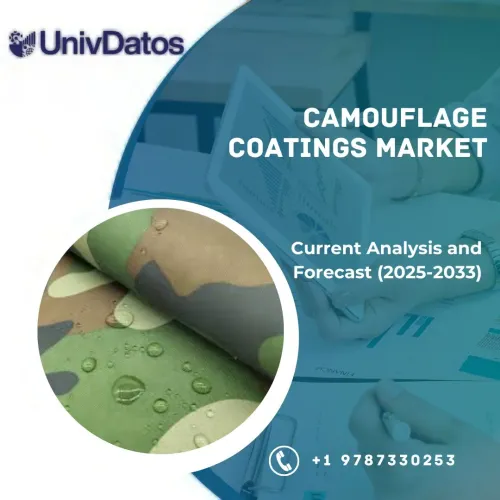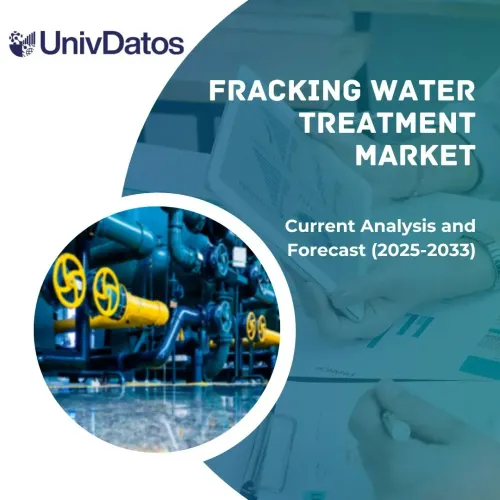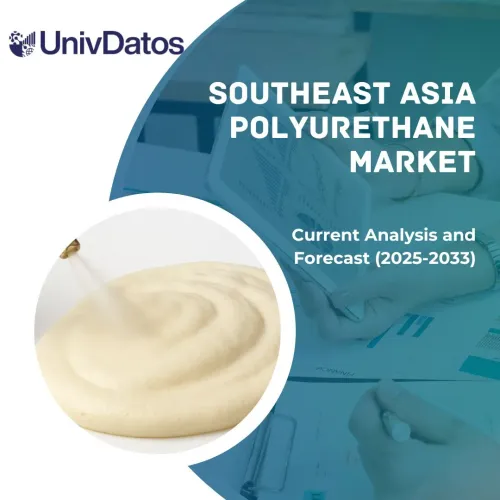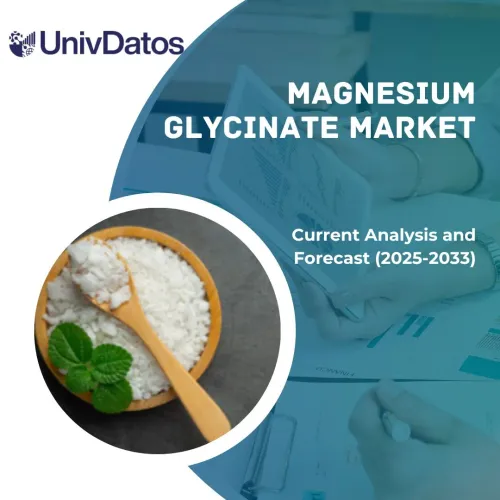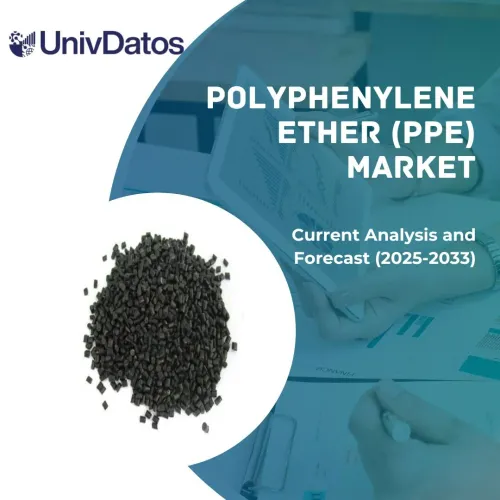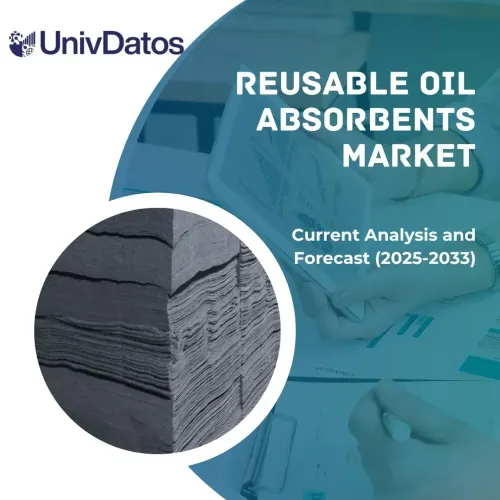- Startseite
- Über uns
- Industrie
- Dienstleistungen
- Lesen
- Kontaktieren Sie uns
Schleifmittelmarkt: Aktuelle Analyse und Prognose (2021-2027)
Schwerpunkt auf Typ (Gebunden, Beschichtet und Super); Material (Natürlich und Synthetisch); Endverwendung (Bauwesen, Elektronik, Automobil, Metallverarbeitung und Sonstige); Region/Land.
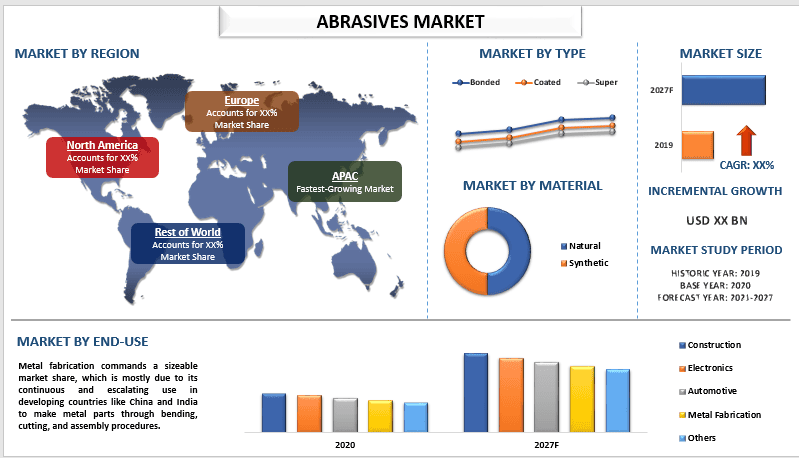
KOSTENLOSES MUSTER-PDF ANFORDERN
Es wird erwartet, dass der globale Schleifmittelmarkt im Zeitraum 2021-2027 eine CAGR von rund 4 % verzeichnen wird. Schleifmittel sind Materialien, die wiederholt gegen weichere Substanzen geschabt werden, um diese zu polieren oder die Rauheit ihrer Oberfläche zu verringern. Sie werden in einer Vielzahl von Prozessen eingesetzt, darunter Schleifen, Polieren, Läppen, Honen, Druckstrahlen und andere. Abhängig von der zu entfernenden Materialmenge sind sie in verschiedenen Partikel- oder Korngrößen erhältlich. Das globale Wachstum des Schleifmittelmarktes ist auf die wachsenden Automobil-, Metallverarbeitungs-, Maschinenbau-, Elektronik-, Elektro-, Medizin- und Bauindustrie zurückzuführen, die wesentlich zum Wachstum des Schleifmittelmarktes beigetragen haben. In den kommenden Jahren wird prognostiziert, dass der Bedarf an Schleifmitteln mit zunehmender Beliebtheit von Elektrofahrzeugen und ihren Ladestationen steigen wird. Zum Beispiel wurde im Februar 2022 eine Absichtserklärung (MoU) zwischen dem Elektro-Zweiradunternehmen Ather Energy und den Elektrizitätsversorgungsunternehmen (ESCOMs) von Karnataka zur Einrichtung von 1.000 Schnellladestationen im gesamten Bundesstaat unterzeichnet.
Zu den wichtigsten Akteuren auf dem Markt gehören Robert Bosch GMBH, 3M Company, Saint-Gobain Abrasives, Inc, Fujimi Incorporated, LafargeHolcim, Balfour Beatty PLC, Kier Group PLC, Carillon PLC, Tyrolit Group und Asahi Diamond Industrial Co.
Im Bericht präsentierte Einblicke
„Unter den Materialien machte der Sektor der synthetischen Schleifmittel einen beträchtlichen Anteil am Markt aus“
Basierend auf dem Material wird der Markt in natürliche und synthetische Schleifmittel unterteilt. Ein beträchtlicher Marktanteil wird vom Sektor der synthetischen Schleifmittel gehalten. Im Gegensatz zu natürlichen Schleifmitteln, die abgebaut werden, sind viele synthetische Schleifmittel mit natürlichen Mineralien vergleichbar, werden aber künstlich hergestellt. Dies erleichtert die Veränderung der Struktur, Größe und Form der Körner erheblich. Darüber hinaus verlieren natürliche Mineralien aufgrund von Verunreinigungen einen Teil ihrer Wirksamkeit, was künstliche Schleifmittel zu einer besseren Option macht.
„Unter den Typen wird erwartet, dass der beschichtete Sektor eine erhebliche CAGR verzeichnen wird.“
Basierend auf dem Typ wird der Markt in gebundene, beschichtete und Super-Schleifmittel unterteilt. Die Kategorie der beschichteten Schleifmittel hält einen beträchtlichen Marktanteil und wird in einer Reihe von Sektoren eingesetzt, darunter Fertigung, Werkzeugmaschinen, Möbel und medizinische Artikel. Es wird jedoch auch erwartet, dass gebundene Schleifmittel im prognostizierten Zeitraum erheblich expandieren werden, da sie in hochpräzisen Kantensektoren wie Automobil, Bauwesen und Holzbearbeitung überlegene Oberflächengüten aufweisen.
„Unter den Endverbrauchern wird erwartet, dass die Metallverarbeitung im Prognosezeitraum ein signifikantes CAGR-Wachstum verzeichnen wird“
Basierend auf der Endverbrauchsindustrie wird der Markt in Bauwesen, Elektronik, Automobil, Metallverarbeitung und Sonstige unterteilt. Die Metallverarbeitung nimmt einen beträchtlichen Marktanteil ein, was hauptsächlich auf ihre kontinuierliche und eskalierende Verwendung in Entwicklungsländern wie China und Indien zur Herstellung von Metallteilen durch Biege-, Schneid- und Montageverfahren zurückzuführen ist. Polieren, Reinigen, Entgraten und Reparieren von Automobilteilen gehören zu den Automobilanwendungen, die zusammen mit dem Automobilsektor entstehen.
„APAC wird im Prognosezeitraum ein signifikantes Wachstum verzeichnen“
Es wird erwartet, dass der asiatisch-pazifische Raum das höchste CAGR-Wachstum im Schleifmittelmarkt aufweisen wird. Die Hauptfaktoren für das Wachstum dieses Marktes sind China und Indien. Es wird prognostiziert, dass der Schleifmittelmarkt in Ländern wie Indien und China aufgrund steigender Entwicklungsaktivitäten und beschleunigten Wirtschaftswachstums schneller expandieren wird. Aufgrund ihrer enormen Bevölkerungszahlen bieten diese Länder auch eine beträchtliche Kundenbasis. Es wird erwartet, dass die steigende Nachfrage aus dem Bau- und Automobilsektor die Nachfrage in der Metall- und Chemieindustrie ankurbeln wird, was zu einem Wachstum des APAC-Schleifmittelmarktes führt. Da Schleifmittel in diesen Branchen stark bei chemischen und metallverarbeitenden Betrieben eingesetzt werden, was die Nachfrage ankurbelt.
SPRECHEN SIE MIT EINEM ANALYSTEN
Gründe für den Kauf dieses Berichts:
- Die Studie umfasst eine Marktdimensionierungs- und Prognoseanalyse, die von authentifizierten wichtigen Branchenexperten validiert wurde.
- Der Bericht bietet einen schnellen Überblick über die Gesamtleistung der Branche auf einen Blick.
- Der Bericht enthält eine eingehende Analyse prominenter Branchenkollegen mit einem primären Fokus auf wichtige Finanzdaten des Unternehmens, Produktportfolio, Expansionsstrategien und aktuelle Entwicklungen.
- Detaillierte Untersuchung von Treibern, Hemmnissen, wichtigen Trends und Chancen, die in der Branche vorherrschen.
- Die Studie deckt den Markt umfassend über verschiedene Segmente hinweg ab.
- Tiefgreifende regionale Analyse der Branche.
Anpassungsoptionen:
Der globale Schleifmittelmarkt kann gemäß den Anforderungen oder einem anderen Marktsegment weiter angepasst werden. Darüber hinaus versteht UMI, dass Sie möglicherweise Ihre eigenen geschäftlichen Anforderungen haben. Nehmen Sie daher Kontakt mit uns auf, um einen Bericht zu erhalten, der Ihren Anforderungen vollständig entspricht.
Inhaltsverzeichnis
Forschungs methodik für die globale Analyse des Schleifmittelmarktes (2021-2027)
Die Analyse des historischen Marktes, die Schätzung des aktuellen Marktes und die Prognose des zukünftigen Marktes des globalen Schleifmittelmarktes waren die drei Hauptschritte, die unternommen wurden, um die Akzeptanz von Schleifmitteln in wichtigen Regionen weltweit zu schaffen und zu analysieren. Es wurde eine umfassende Sekundärforschung durchgeführt, um die historischen Marktzahlen zu erfassen und die aktuelle Marktgröße zu schätzen. Zweitens wurden zahlreiche Erkenntnisse und Annahmen berücksichtigt, um diese Erkenntnisse zu validieren. Darüber hinaus wurden umfassende Primärinterviews mit Branchenexperten entlang der Wertschöpfungskette des globalen Schleifmittelmarktes geführt. Nach der Annahme und Validierung der Marktzahlen durch Primärinterviews haben wir einen Top-Down/Bottom-Up-Ansatz verwendet, um die vollständige Marktgröße zu prognostizieren. Danach wurden Marktaufschlüsselungs- und Datentriangulationsmethoden angewendet, um die Marktgröße von Segmenten und Untersegmenten der Branche zu schätzen und zu analysieren. Die detaillierte Methodik wird im Folgenden erläutert:
Weitere Details zur Forschungsmethodik anfordern
Analyse der historischen Marktgröße
Schritt 1: Eingehende Untersuchung sekundärer Quellen:
Es wurde eine detaillierte Sekundärstudie durchgeführt, um die historische Marktgröße des Schleifmittelmarktes anhand von unternehmensinternen Quellen wie Jahresberichten und Finanzberichten, Performance-Präsentationen, Pressemitteilungen usw. und externen Quellen wie Fachzeitschriften, Nachrichten und Artikeln, Regierungsveröffentlichungen, Wettbewerbsveröffentlichungen, Sektorberichten, Datenbanken von Drittanbietern und anderen glaubwürdigen Veröffentlichungen zu erhalten.
Schritt 2: Marktsegmentierung:
Nachdem wir die historische Marktgröße des Schleifmittelmarktes erhalten hatten, führten wir eine detaillierte Sekundäranalyse durch, um historische Markteinblicke und Anteile für verschiedene Segmente und Untersegmente für wichtige Regionen zu sammeln. Die wichtigsten Segmente, die in dem Bericht enthalten sind, sind Material, Typ und Endanwendung. Darüber hinaus wurden Länderanalysen durchgeführt, um die Gesamtakzeptanz von Testmodellen in dieser Region zu bewerten.
Schritt 3: Faktorenanalyse:
Nachdem wir die historische Marktgröße verschiedener Segmente und Untersegmente ermittelt hatten, führten wir eine detaillierte Faktorenanalyse durch, um die aktuelle Marktgröße des Schleifmittelmarktes zu schätzen. Darüber hinaus führten wir eine Faktorenanalyse unter Verwendung von abhängigen und unabhängigen Variablen wie verschiedenen Materialien, Typen und Endverwendungen von Schleifmitteln durch. Eine gründliche Analyse wurde für Nachfrage- und Angebotsseitenszenarien unter Berücksichtigung von Top-Partnerschaften, Fusionen und Übernahmen, Geschäftsausweitungen und Produkteinführungen im Schleifmittelmarktsektor weltweit durchgeführt.
ANFRAGE ZUR KUNDENSPEZIFISCHEN ANPASSUNG
Aktuelle Marktzählung und -prognose
Aktuelle Marktzählung: Basierend auf den umsetzbaren Erkenntnissen aus den oben genannten 3 Schritten gelangten wir zur aktuellen Marktgröße, zu den wichtigsten Akteuren auf dem globalen Schleifmittelmarkt und zu den Marktanteilen der Segmente. Alle erforderlichen prozentualen Anteile und Marktaufschlüsselungen wurden unter Verwendung des oben genannten sekundären Ansatzes ermittelt und durch Primärinterviews verifiziert.
Schätzung & Prognose: Für die Marktschätzung und -prognose wurden verschiedenen Faktoren Gewichte zugewiesen, darunter Triebkräfte & Trends, Beschränkungen und Chancen, die den Stakeholdern zur Verfügung stehen. Nach der Analyse dieser Faktoren wurden relevante Prognosetechniken, d. h. der Top-Down/Bottom-Up-Ansatz, angewendet, um die Marktprognose bis etwa 2027 für verschiedene Segmente und Untersegmente in den wichtigsten Märkten weltweit zu erhalten. Die Forschungsmethodik zur Schätzung der Marktgröße umfasst:
- Die Marktgröße der Branche in Bezug auf den Umsatz (USD) und die Akzeptanzrate des Schleifmittelmarktes in den wichtigsten Märkten im Inland
- Alle prozentualen Anteile, Aufteilungen und Aufschlüsselungen von Marktsegmenten und Untersegmenten
- Die wichtigsten Akteure auf dem globalen Schleifmittelmarkt in Bezug auf die angebotenen Lösungen. Auch die von diesen Akteuren verfolgten Wachstumsstrategien, um in dem schnell wachsenden Markt wettbewerbsfähig zu sein
Validierung von Marktgröße und -anteil
Primärforschung: Es wurden ausführliche Interviews mit den wichtigsten Meinungsbildnern (KOLs) geführt, darunter Führungskräfte der obersten Ebene (CXO/VPs, Vertriebsleiter, Marketingleiter, Betriebsleiter, Regionalleiter, Landesleiter usw.) in den wichtigsten Regionen. Die Ergebnisse der Primärforschung wurden dann zusammengefasst und eine statistische Analyse durchgeführt, um die aufgestellte Hypothese zu beweisen. Die Erkenntnisse aus der Primärforschung wurden mit den sekundären Erkenntnissen zusammengeführt, wodurch Informationen in umsetzbare Erkenntnisse umgewandelt wurden.
Aufteilung der primären Teilnehmer in verschiedenen Regionen
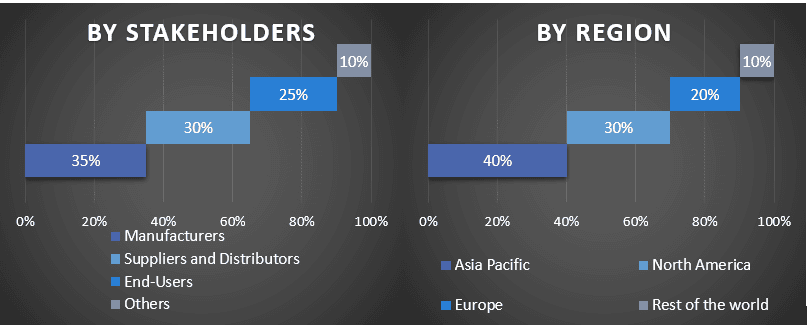
SPRECHEN SIE MIT EINEM ANALYSTEN
Markttechnik
Es wurde eine Datentriangulationstechnik angewendet, um die gesamte Marktschätzung abzuschließen und genaue statistische Zahlen für jedes Segment und Untersegment des globalen Schleifmittelmarktes zu erhalten. Die Daten wurden in mehrere Segmente und Untersegmente aufgeteilt, nachdem verschiedene Parameter und Trends in den Bereichen Angebot und Technik auf dem globalen Schleifmittelmarkt untersucht wurden.
Das Hauptziel der globalen Studie zum Schleifmittelmarkt
Die aktuellen und zukünftigen Markttrends des globalen Schleifmittelmarktes wurden in der Studie genau bestimmt. Investoren können strategische Einblicke gewinnen, um ihre Diskretion für Investitionen auf der Grundlage der in der Studie durchgeführten qualitativen und quantitativen Analyse zu stützen. Aktuelle und zukünftige Markttrends bestimmten die Gesamtattraktivität des Marktes auf regionaler Ebene und boten den industriellen Teilnehmern eine Plattform, um den unerschlossenen Markt zu nutzen und als First-Mover-Vorteil zu profitieren. Weitere quantitative Ziele der Studien sind:
- Analyse der aktuellen und prognostizierten Marktgröße des Schleifmittelmarktes in Bezug auf den Wert (USD). Analysieren Sie auch die aktuelle und prognostizierte Marktgröße verschiedener Segmente und Untersegmente
- Zu den Segmenten in der Studie gehören die Bereiche Material, Typ, Endanwendung und Region.
- Definition und Analyse des regulatorischen Rahmens für die Schleifmittelmarktbranche.
- Analyse der Wertschöpfungskette unter Beteiligung verschiedener Vermittler sowie Analyse des Kunden- und Wettbewerberverhaltens der Branche.
- Analyse der aktuellen und prognostizierten Marktgröße des Schleifmittelmarktes für die Hauptregion.
- Zu den wichtigsten Ländern der in dem Bericht untersuchten Regionen gehören der asiatisch-pazifische Raum, Europa, Nordamerika und der Rest der Welt.
- Unternehmensprofile des Schleifmittelmarktes und die von den Marktteilnehmern verfolgten Wachstumsstrategien, um in dem schnell wachsenden Markt zu bestehen
- Eingehende regionale Analyse der Branche
Verwandt Berichte
Kunden, die diesen Artikel gekauft haben, kauften auch



